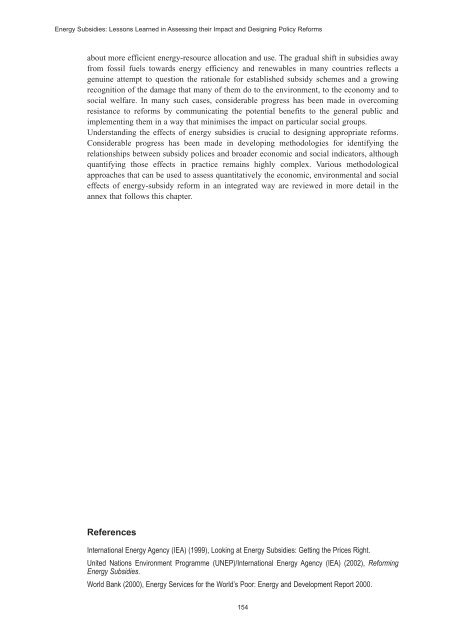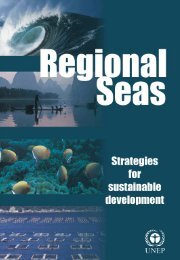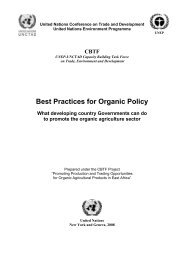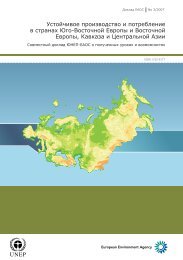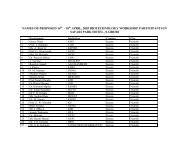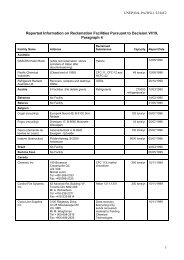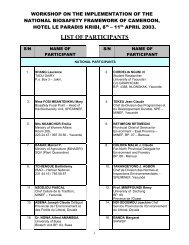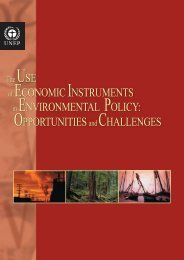Energy Subsidies: Lessons Learned in Assessing their Impact - UNEP
Energy Subsidies: Lessons Learned in Assessing their Impact - UNEP
Energy Subsidies: Lessons Learned in Assessing their Impact - UNEP
Create successful ePaper yourself
Turn your PDF publications into a flip-book with our unique Google optimized e-Paper software.
<strong>Energy</strong> <strong>Subsidies</strong>: <strong>Lessons</strong> <strong>Learned</strong> <strong>in</strong> Assess<strong>in</strong>g <strong>their</strong> <strong>Impact</strong> and Design<strong>in</strong>g Policy Reforms<br />
about more efficient energy-resource allocation and use. The gradual shift <strong>in</strong> subsidies away<br />
from fossil fuels towards energy efficiency and renewables <strong>in</strong> many countries reflects a<br />
genu<strong>in</strong>e attempt to question the rationale for established subsidy schemes and a grow<strong>in</strong>g<br />
recognition of the damage that many of them do to the environment, to the economy and to<br />
social welfare. In many such cases, considerable progress has been made <strong>in</strong> overcom<strong>in</strong>g<br />
resistance to reforms by communicat<strong>in</strong>g the potential benefits to the general public and<br />
implement<strong>in</strong>g them <strong>in</strong> a way that m<strong>in</strong>imises the impact on particular social groups.<br />
Understand<strong>in</strong>g the effects of energy subsidies is crucial to design<strong>in</strong>g appropriate reforms.<br />
Considerable progress has been made <strong>in</strong> develop<strong>in</strong>g methodologies for identify<strong>in</strong>g the<br />
relationships between subsidy polices and broader economic and social <strong>in</strong>dicators, although<br />
quantify<strong>in</strong>g those effects <strong>in</strong> practice rema<strong>in</strong>s highly complex. Various methodological<br />
approaches that can be used to assess quantitatively the economic, environmental and social<br />
effects of energy-subsidy reform <strong>in</strong> an <strong>in</strong>tegrated way are reviewed <strong>in</strong> more detail <strong>in</strong> the<br />
annex that follows this chapter.<br />
References<br />
International <strong>Energy</strong> Agency (IEA) (1999), Look<strong>in</strong>g at <strong>Energy</strong> <strong>Subsidies</strong>: Gett<strong>in</strong>g the Prices Right.<br />
United Nations Environment Programme (<strong>UNEP</strong>)/International <strong>Energy</strong> Agency (IEA) (2002), Reform<strong>in</strong>g<br />
<strong>Energy</strong> <strong>Subsidies</strong>.<br />
World Bank (2000), <strong>Energy</strong> Services for the World’s Poor: <strong>Energy</strong> and Development Report 2000.<br />
154


